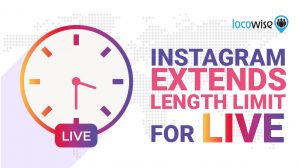If you are an eCommerce merchant, you may be missing out on two huge untapped opportunities to dramatically boost your sales.
The first opportunity has to do with cross-border eCommerce. Currently, the international eCommerce industry is worth $ 300 billion and that figure is predicted to triple in the next four years.
The second opportunity is with your current shoppers who have already found your website, browsed your products and filled up their shopping cart. The problem, according to industry research, is that 40% of these shoppers won’t complete their purchase. That’s real money lost for your business.
So how can you recapture the lost revenue from the potential 40% of shoppers who abandon full shopping carts on your site’s checkout page and simultaneously optimize your site for international shoppers? It might sound complicated, but it’s not — not if you implement these 10 tactical strategies to decrease abandonment rates and increase conversions.
- Present information in local languages and local currency
By 2020, about 943 million people world-wide are expected to buy online from abroad, spending an estimated $ 994 billion — nearly quadruple the sum 309 million such people spent in 2013, according to a study by Accenture and AliResearch, an arm of eCommerce company Alibaba, as reported by The Wall Street Journal. If you are an eCommerce merchant this presents a massive opportunity. And one of the first steps in appealing to international consumers is to ensure that your checkout page is written in the consumer’s local language and that all prices and figures are displayed in the local currency. Can you imagine making a purchase from a website that you can’t read and that displays prices in a foreign currency? Neither can anyone else. That’s why it is so crucial to localize your checkout pages for each country or region you hope to sell in.
- Limit your checkout page form fields, use a progress bar and autosave your shoppers’ information
Consumers shop online for one primary reason: convenience. By forcing shoppers to fill out many form fields you are decreasing the ease of shopping on your site. Because many form fields ask for duplicate information you can save your customer info and then automatically populate it into the subsequent fields. This also helps if a shopper fails to fill in all the fields correctly and gets an error message. Instead of refilling every field, their info will automatically appear. If you have to include many form fields on multiple pages, using a progress bar can help illustrate to a shopper how far along in the checkout process they are. When you’re shopping online it can be helpful to know where you’re going and how fast.
- Ensure you are able to accept multiple payment types
Alternative payments account for 22% of global eCommerce transactions, worth a total of $ 189 billion. According to an in-depth study of 650 eCommerce merchants, those who experienced the lowest levels of checkout friction and checkout abandonment offered, on average, 6.8 global payment types (versus four for the under performers). Offering multiple payment types is important if you want to appeal to a wide array of shoppers, including those that use mobile wallets and international shoppers. For example, if you want to attract Chinese consumers be sure to use Alipay, for German consumers you will need to accept Sofort, and the list goes on and on. Offering multiple payment types is important if you want to maximize your conversions and increase sales. In fact, 59 percent of shoppers will not make a purchase if their preferred payment method is not offered.
- Display product reviews on your checkout pages
There is no marketing tool more effective than word of mouth. Product reviews, though submitted by strangers, work in a similar way as word of mouth promotion and can help build confidence in shoppers who are deciding on what products to purchase and what products to shelve. Take it a step further and include one or two positive product/service reviews on your checkout page. It may give your shopper the final push they need to click “buy.”
- Clearly display security logos on your site
Security matters to everyone, especially in an era when cyber attacks and data breaches are so prevalent. So make sure you add security logos to your website and ensure they are always visible on your checkout pages, when shoppers are at the crucial juncture of deciding if they should enter their personal and sensitive payment information.
- Add live chat to your site
Today’s shoppers want answers fast. In fact, studies show that 60% of customers hate waiting for longer than a minute for support. Keep them waiting and they are likely to abandon, heading off to a competitor’s website with a simple click of the mouse. Live chat, however, can help you retain those shoppers through offering immediate support and push them further down the funnel toward the decision-making phase. According to a survey by Forrester, 44% of consumers say that having a live person answer their questions while in the middle of an online purchase is one of the most important features a website can offer. Plus, by using live chat you will be able to glean valuable information from consumers, which will help you improve your products, services and marketing efforts.
- Offer coupons on your checkout page
Coupons are a tried-and-true way to increase sales and drive more traffic to your site. Coupons are also a great way to bring existing customers back to your site, to boost repeat purchases and increase customer lifetime value. But one major mistake many retailers make is failing to offer coupons at checkout. When a shopper sees a coupon code box but no coupon, what’s the first thing they are likely to do? Leave your website and open a new browser window to search for a coupon. Keep shoppers on your page by offering coupons, not just on your homepage or through email but at checkout as well.
- Ensure you are connected to multiple acquiring banks
Using a payment gateway that is connected to multiple acquiring banks and not just one is especially important for merchants looking to capitalize on the cross-border opportunity. By connecting to more than one acquiring bank you increase the odds that transactions on your site are accepted. For example, customers coming in from China are very likely to get declined when processed at a U.S. national bank. But when you use multiple acquiring banks, the Chinese shopper’s transaction will be routed to a local Chinese bank where it has a higher likelihood of being accepted.
- Use retry and failover strategies
With connections to multiple banks, you will be able to retry and failover your transactions should they fail at the first bank. This simple functionality can increase your conversions by up to 3%.
- Make sure your fraud rules are in order
Make sure that your fraud engine is working for you not against you.
While it is important to employ a robust fraud solution, it is also critical to understand how to set up and create your own fraud rules – too strict and you will be creating friction, too lax and you will be letting fraudsters run your site! Optimizing your rule sets will reduce the time spent on manually reviewing orders and cut down on false positives, ultimately enhancing your customers’ experience.
So how does your eCommerce site measure up? Are you currently using these 10 critical strategies or do you have an opportunity to capture more conversions? Use the Checkout Conversion Calculator to find out! The calculator will scan your site for potential weak spots, then offer you an overall conversion grade plus tips on how to improve performance and increase sales — because while these 10 strategies are the most critical there are many other areas where your site may be letting you down and allowing conversions to slip through the cart holes.
Digital & Social Articles on Business 2 Community(138)





